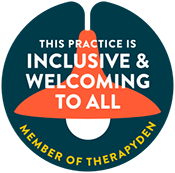Struggling to sleep is not just frustrating- it can take a toll on your mental, emotional, and physical well-being. But what many people do not realize is that insomnia is not a one-size-fits-all problem. There are different types, each with its own causes, patterns, and psychological impact. Some people cannot fall asleep no matter how exhausted they are, while others wake up at 2 or 3 a.m. and cannot get back to sleep. Understanding the type of insomnia you are experiencing is the first step toward getting the right kind of support.
At Anchor Therapy, our sleep anxiety counselors often see clients who have been battling insomnia for months or even years without knowing there is more than one way it can present. Knowing whether your insomnia is acute, chronic, sleep-onset, or sleep-maintenance related can help guide treatment options, whether that is Cognitive Behavioral Therapy for insomnia (CBT-I), trauma-focused care, or stress management techniques. In this blog, we will break down the common types of insomnia and explain why identifying your specific sleep pattern is so important for finding relief that lasts.






























